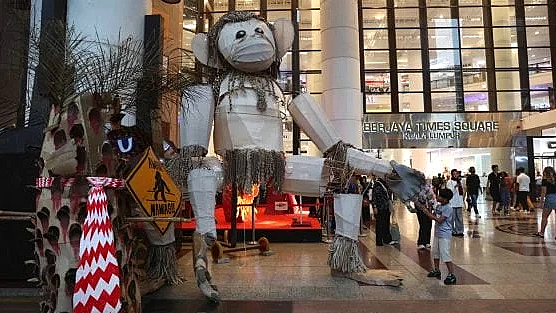
I often hear all kinds of mythical stories whenever I wander through the forest. Some warn humans to beware of demons and spirits, while others praise the protection of ancestral spirits and deities. However, in the world of the indigenous people, there is one figure that is both good and evil. It is believed to devour human souls while also being the guardian of forest. This controversial “creature” has many names. In North America, it is called Bigfoot or Sasquatch; in the Himalayas, it is known as the Yeti; and in Malaysia, one of its names is Mawas. Yes, it is the mysterious, unproven creature that frequently appears in world mythology—Bigfoot. Records about Mawas are scarce, with the earliest documents tracing back to the British colonial era. At that time, explorers heard stories from indigenous people about encounters with Mawas deep in the Peninsular Malaysia. These accounts often describe it as a creature standing six to 10 feet tall, covered in long black or reddish fur, resembling an ape, and possess supernatural abilities that allow it to move swiftly through the forest. But where has Mawas been sighted? According to a 2005 report, three workers reported seeing three Bigfoot-like creatures near the indigenous village of Mawai in Kota Tinggi, Johor. Later, massive human-like footprints were discovered nearby, with one measuring up to 45 centimetres long, causing a sensation both locally and internationally. The following year, the Johor state government even formed a forest expedition team to verify the existence of Mawas – Malaysia’s first official search for a mythical creature. Mawas enters children’s theatre Regardless of whether the Johor government ultimately found Mawas, I recently had my own “encounter” with one! But instead of being in the south, it was in Selangor. A few months ago, I was invited by Shaq Koyok, an indigenous artist from the Temuan tribe, to visit his village and witness this legendary Mawas. To my surprise, its appearance was adorable and amusing – completely different from what historical records describe. In reality, it was part of a cross-disciplinary art project called “Awas Mawas” (Beware of Bigfoot). The initiative was led by sculptor William Koong, visual artist Forest Wong, theatre director Ayam Fared, community art advocate Fairuz Sulaiman, and performing artist Malin Faisal, with support from Orang Orang Drum Theatre. Inspired by the Bread and Puppet Theatre in the United States, this artistic group spent three weeks in Temuan and Mah Meri villages, discussing myths and land issues with the locals. During this time, they encouraged children to create their own stories and characters, incorporating adult perspectives, and then worked together to craft giant puppets using eco-friendly materials like cardboard, dried leaves, and bamboo strips. Among these were Mawas, the Temuan ancestral spirit Moyang Lanjut, and the Mah Meri ancestral spirit Moyang Tok Naning. At the event’s finale, this “modern-day Mawas” acted as the narrator, leading the entire village in a cultural parade, while the children performed two different theatrical plays. These plays aimed to […]
1月前
更多Orang Asli